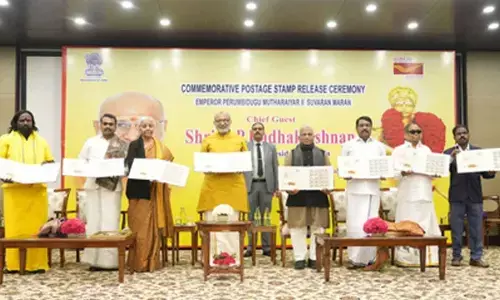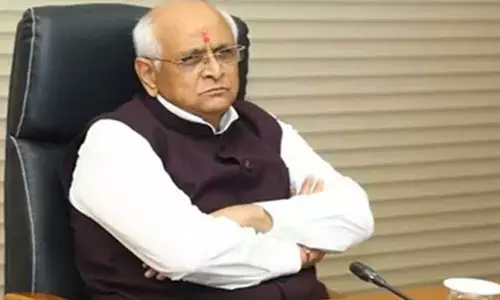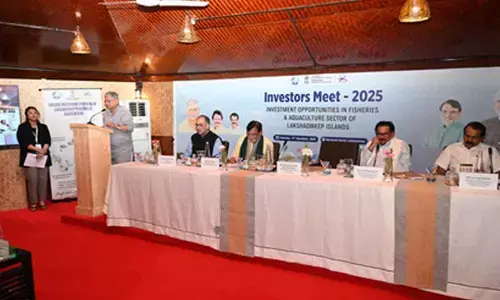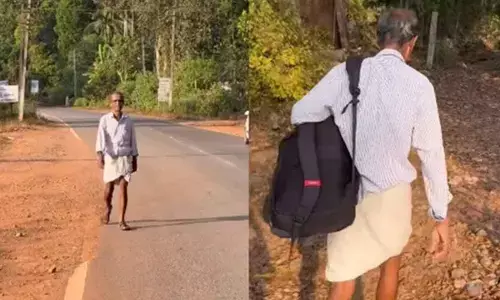Fiscal deficit of 18 states revised by 50 bsp to 4%
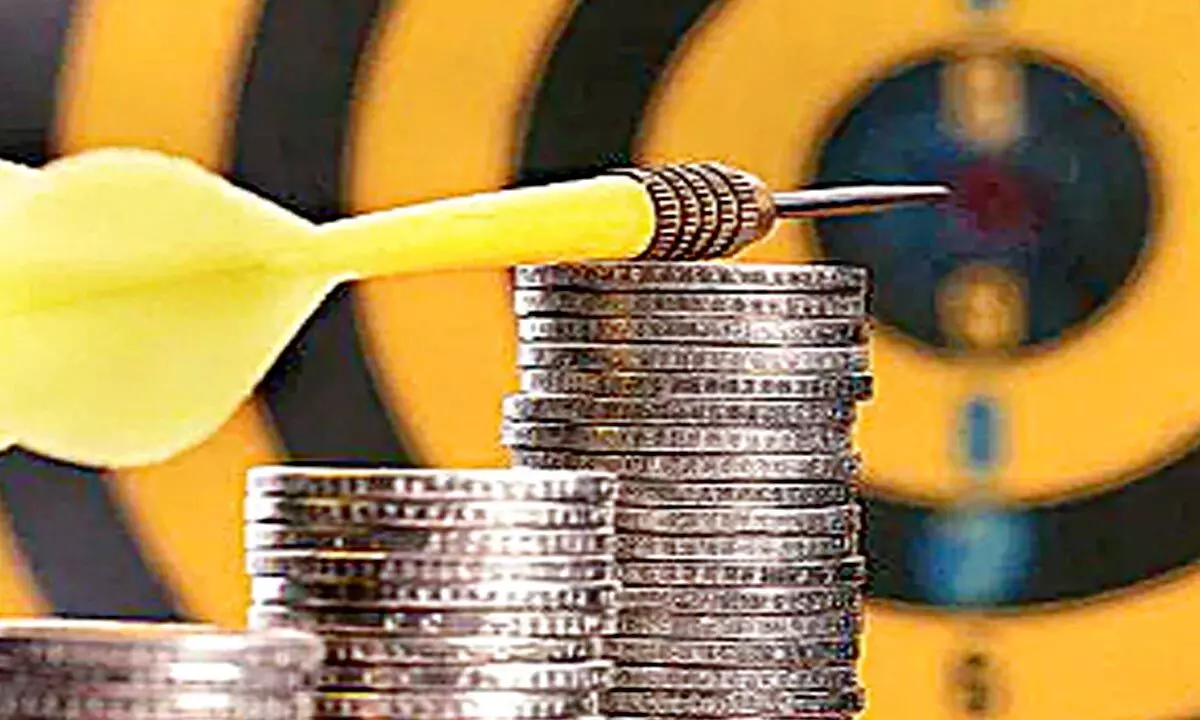
Fiscal deficit of 18 states revised by 50 bsp to 4%
Many states are offering freebies which are economically unsustainable; Telangana committed 35% of revenue receipts of the state to finance several populist schemes: SBI report
Fiscal deficit of seven states exceeded their budgeted target though 11 states have been able to keep their fiscal deficit equal to or lower than their budgeted numbers during FY22. Notably, Bihar (8.3 per cent of GSDP or Rs 54,327 crore over its BE) and Assam (4.5 per cent per cent of GSDP or Rs 21,935 crore over its BE) exceeded their fiscal deficit significantly as per RE FY22, while Arunachal Pradesh, Jharkhand, Kerala, Maharashtra and Rajasthan too join the club of states having higher fiscal deficit than their BE
Mumbai: A collateral casualty of pandemic seems to be the fiscal situation of states, as our comprehensive analysis of finances of 18 states demonstrates that the average fiscal deficit (as per cent of GSDP) has been revised upwards by 50 bps to 4.0 per cent for FY22, with 6 states slithering towards the red line, reporting fiscal deficit more than 4 per cent of GSDP, says an internal economic research finding by SBI.
Fiscal deficit of seven states exceeded their budgeted target though 11 states have been able to keep their fiscal deficit equal to or lower than their budgeted numbers during FY22. Notably, Bihar (8.3 per cent of GSDP or Rs 54,327 crore over its BE) and Assam (4.5 per cent per cent of GSDP or Rs 21,935 crore over its BE) exceeded their fiscal deficit significantly as per RE FY22, while Arunachal Pradesh, Jharkhand, Kerala, Maharashtra and Rajasthan too join the club of states having higher fiscal deficit than their BE. For FY23, states have budgeted lower fiscal deficit of 3.4 per cent with combined fiscal deficit for these 18 states projected at Rs 7.2 lakh crore, though the group numbers seem shrouded in uncertainty given the constraints in receipts, adherence to fiscal discipline and hyper adventurism embraced by a select few.
An interesting anecdote in India is that if we apply a bottom up approach to estimating India's GDP by aggregating GSDP across states, the figures have significantly widened in FY21, to the extent of at least 5.7 per cent of GDP. The dichotomy of growth numbers by the Centre and States brings forth interesting divergences in geographical aspirations, and ensuing imbalances going forward as states like Andhra Pradesh, Assam, Gujarat, Haryana, Maharashtra, Rajasthan, Telangana and West Bengal show their real GSDP growth much higher than the overall GDP growth of the country even while overall growth for 17 states (estimated by States in their budgets) is slightly lower than India's real GDP growth! There has always been a gap between India's GDP and GSDP given by the States and UTs.
Soumya Kanti Ghosh, SBI group's chief economic advisor says, "States' capex in FY22 grew by a whopping 36.2 per cent in response to the need to upscale heath infrastructure in the face of the multi-year nature of pandemic. Capex outlays have also been increased for urban development, water supply and sanitation, irrigation and transport. States' total expenditure is budgeted to increase moderately in FY23, likely to be driven by a significant slowdown in capex (average growth of 21 states is 13.8 per cent), while revenue spending should remain compressed (average: 8.5 per cent)."
Committed expenditure of a state typically consisting of expenditure on payment of salaries, pensions, and interest is steadily on the rise in the last three years with its share in the revenue receipts now standing at 56 per cent in FY23 budgeted figures. Incidentally, a larger proportion of the budget allocated for committed expenditure items limits the state's flexibility to decide on other expenditure priorities such as developmental schemes and capital outlay. It has increased by 6 per cent in FY23 budgeted figures; salaries component up 6.8 per cent, interest payments up 8.7 per cent and pension payment up 12.2 per cent, he added.
At the time of GST's introduction, States' revenue subsumed under GST was legislatively protected for the transition period of five years (July 2017 to June 2022) with the assumption of a constant growth of 14 per cent per annum. Any shortfall was to be funded through additional taxation (compensation cess) on sin/luxury goods. The slowdown in economic activity ensured a shortfall in cess collection in FY20 which increased further in FY21. In Oct'20, the Union Government decided to borrow Rs 1.10 lakh crore from the market in lieu of compensation cess for shortfall in their revenue in FY21. Apart from Rs 1.10 lakh crore compensation, the Centre had also provided Rs 0.91 lakh crore to States out of the GST compensation fund in FY21.
Most states want the Union Government to pay the GST compensation for an additional five years (post June). As for some of the states, the GST compensation as per cent of state's tax revenue is more than 20 per cent. However, many states are offering freebies like farm loan waiver, restoring old pension system, etc, which are economically unsustainable given the financially bad shape of many states. For example, Telangana has committed 35 per cent of revenue receipts of the state to finance several populist schemes. States like Rajasthan, Chhattisgarh, Andhra Pradesh, Bihar, Jharkhand, West Bengal and Kerala have all committed to spend 5-19 per cent of their revenue receipts on such schemes. In terms of percentage of state own tax revenue, this is as much as 63 per cent for some of the states. Clearly, states seem to be currently living beyond their means and it is imperative that states rationalize their spending priorities in accordance with revenue receipts.
In FY23, the net borrowings of states are pegged at Rs 6.6 lakh crore, while gross borrowings are expected to come around Rs 9 lakh crore after taking a repayment of around Rs 2.4 lakh crore. Thus, total gross borrowing of the Centre and States for FY23 comes to 24 lakh crore while net borrowing stands at Rs 18.4 lakh crore.








